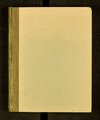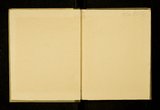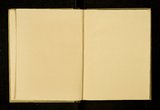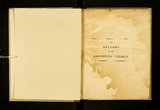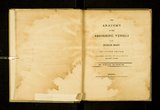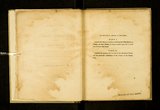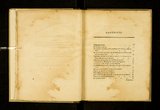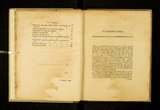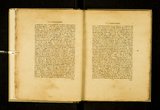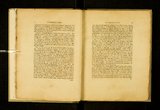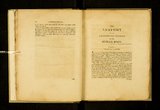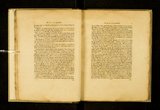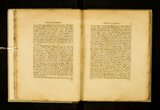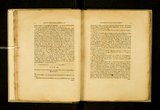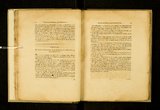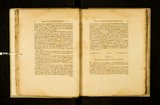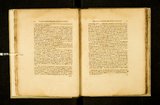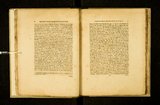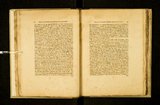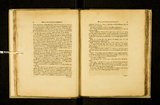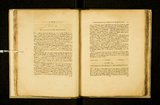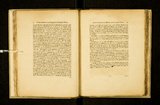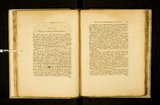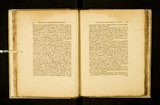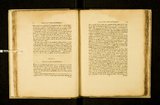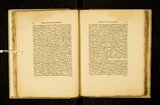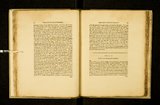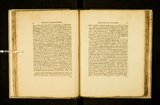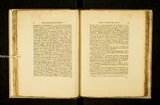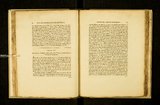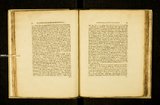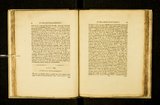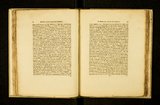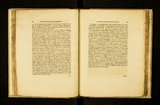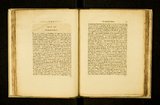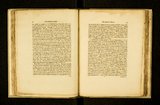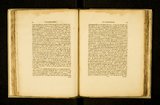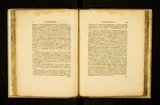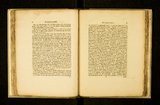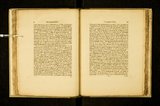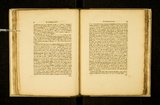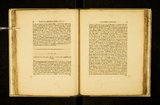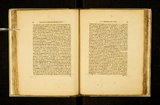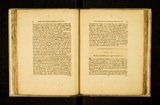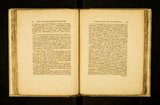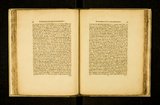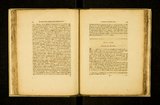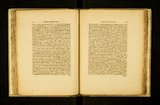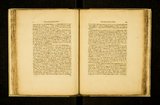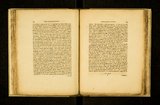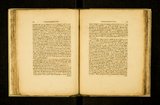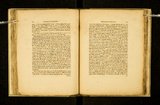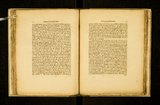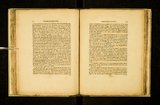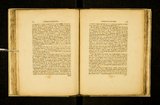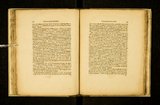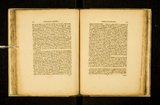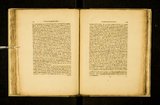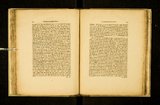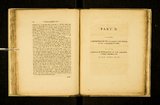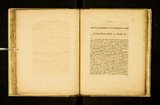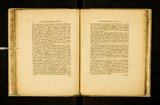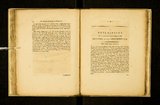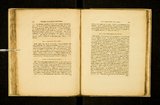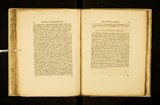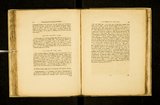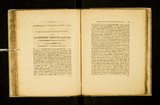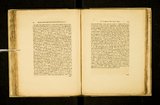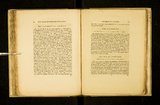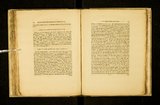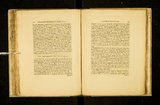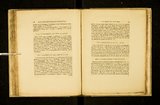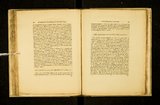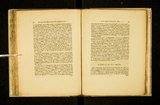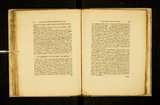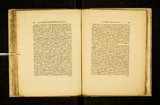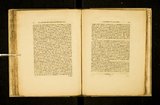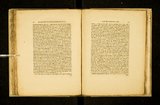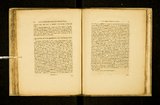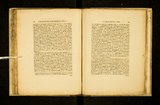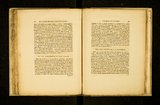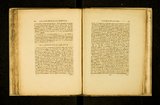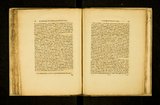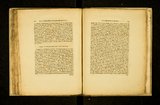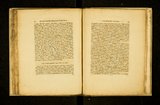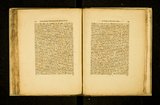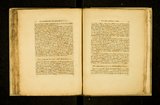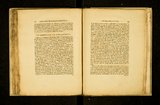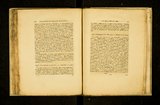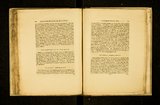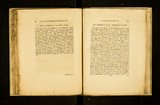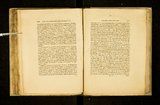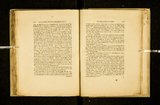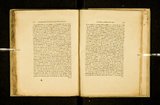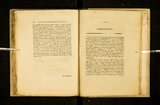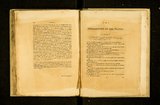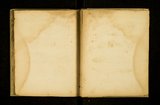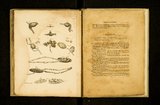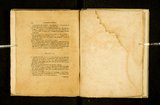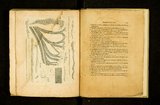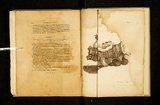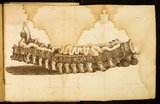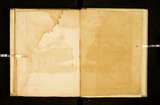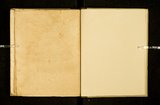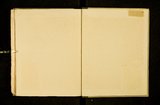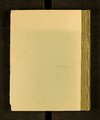| OCR Text |
Show 68 Vutsrlx particular Distribution of the Absorbent . 0/ five ‘" by some , " n( a- described vithout dissection, have put on the appearance (l. sma becomes duct the unite, they veram triloeularem." After \ vitatem the aorta, and crosses obliquely from the During this course it is under ze, wl iere it en larges again, and . ' of the lumbar \eitebr ' slde ' left to the right ' ' of the loins , vertebra uppermost the on bag, sometimes forms a pyriform beginning of the Sustimr in mas which has commonly been said to be the from mine. ‘ K new"? ad Haller's description is somewhat dtflerent ,‘ hum, mctptt in. ut . lumba um tieor ympha experimentis ex trunco l inter vertebram primam him )0_ arteiite sperinaticze initium tenet at igulum arteriz: aortae ct pone tutn et appendicem diaphragmatis lntlma m ad dextra d), d m dorsi." . ‘ um ad prima . lumber vertebra secunda a renalia vasa omnia un t1 1e hes duct thoracte the loins, the of ertebra At the uppermost v In con- right crus of the diaphragm. . Haller supposes, that this muscle, in every , "12,,"th , , re, e; and . therefo tracting, comes nearer the bodies of the v ertchra. and in e\ er) , d? m" contraction, compresses the receptaenlum ehyh, on, an 1n‘ 1: leaves it free: that in the one state the. chyle must be drove to the sysdo . other state the ehylc has room to enter. This he compares appendicem ia- and diastole of the heart: " Dum inspiramus, tumere inanire, ultliisoc::: phragmatis, quac cisternam protegit, eamque exc'utere et CO,,_ phagum comprimit; sic motum 1n chylo orirei --and, to'ieiocrse‘he m- pression, afterwards, " Erit tempus systole? eJus ductus. fl Vnd the :Nm the" trary, when the diaphragm relaxes, and its crura become1 accli s ceptaclc of the chyle will be filled, as the trunks of the actea throw their fluid into a cavity where they meet With the least resistance: the healtt. This state of the diaphragm he compares with the diastole of " In expiratioiie-remittit se diaphragma ct eJus appendices detu'melsjplpx; ' 1n Replttbitur adco cisterna a chylo, quem vasa lactea co, tamquam a .51minus resistentem, subinittunt, erit diastole c15tcrna:." I-le supposes which inilar elfect from the alternate states of compression and relaxation, m the [1.1172717]! Paris of My Body. 169 l believe that the crura of the diaphragm have very little contraction or relaxatlon, except on extraordinary occasions, as in sighing, yawning, coughing, and straining of every kind; for on those occasions I have frequently found them, in my own body, pulling the centrum tendinosum downwards, disturbing the motion of the heart, and giving pain in that region; and I should rather suspect that, on these occasions, thevr receded from the body of the first vertebra of the loins, than that they came nearer tort; but 1 am not certain, Hallcr himself, in another part, makes all this extremely doubtful; for he says, " litsi enim pr ‘onem musculot‘um abdominis aliquicl in pleuissimo abdomiue possit, in ttcrnam potissimum tamen experimenta doccnt, chylum iis musculis rescctis, a morte Celeriter moveri." The fluids also continue to flow through the thoracic duct, af- tcr the thorax is opened, and when every effect of alternate compression and relaxation must of course have been removed. About the first vertebra of the loins, the thoracic duct getting above the diaphragm, lies on the right side of the anterior surface of the spine, be- tween the vcna azygos of the right side, and the aorta of the left, and thus as high as the upper edge of the arch of the aorta. If it be double, one ofthe ducts lies under the aorta commonly; and even when it is not double, very large vcs 'ls belonging to it he under the aorta, and must receive its pulse in its diastole. It has been supposed probable, that as in the greater part of its course through the thorax, though the thoracic duct does not lie under the aorta, yet, as it lies upon its right sids, the fluids of the one may receive some impetus from the distension of the other. Hallcr attributes much of the motion of absorbed fluids to this pulse of the aorta; so that he even thinks it probable, that the reason why the thoracic duct, which below the arch ofthe aorta lay upon the right side of the spine, and of course nearer the right subclavian vein, crosses under the arch of the aorta, and passes the contents of the thorax undergo in respiration: " Nunc certum est, pet to the left side, to terminate in the left subclavian vein, is, that its fluids may receive a stronger momentum from the dilated arch of the aorta, nunierosissima cxperimcnta, alterne in toto thoracc pi‘essionem minui, lava- ri omnia, inque amplius subnaturn spatium sc liberlus diffutidere, utletia‘m thinks is farther confirmed from this circumstance, that where the viscera where the force of the blood is stronger than any where else. This he cxpulsi pulmones in pectus quasi resorbcantur; et VIClSISIITi in eptpiratloplcltr: have been transposed, and the aorta has gone down on the right side of comprimi, ctiam vehementer, atque totatn pulmonem (JC vulneie :nglic;,e the spine, instead of the left, and the thoracic duct, also transposed, lay Z upon a... 49.5w» . . 1 |


